Geometry is not just about circles and squares; it encompasses a variety of shapes, each with its unique properties and applications. One such interesting figure is the heptagon 🤓.

✅ AI Essay Writer ✅ AI Detector ✅ Plagchecker ✅ Paraphraser
✅ Summarizer ✅ Citation Generator
Heptagon – Definition
A heptagon is a polygon with seven sides, seven angles, and seven vertices. Stemming from the Greek words “hepta” meaning seven and “gonia” meaning angle, the heptagon embodies a shape with seven angles. In the world of geometry, where every shape tells a story of angles and lines, the heptagon stands out with its unique structure.

Properties and Types of Heptagons
- Sides and Angles: Boasts seven sides, angles, and vertices.
- Interior Angles: The sum of interior angles equals 900°, distributing the polygon’s space intriguingly.
- Diagonals: Houses 14 diagonals, weaving a network of lines that connect non-adjacent vertices.

Heptagons are primarily categorized into two types: regular and irregular.
- Regular Heptagon: Characterized by equal sides and angles, with each angle measuring approximately 128.57°. It’s a model of symmetry and balance, lacking any parallel sides.
- Irregular Heptagon: Distinguished by varying side lengths and angle degrees, this type can include parallel sides, showcasing diversity in form and structure.
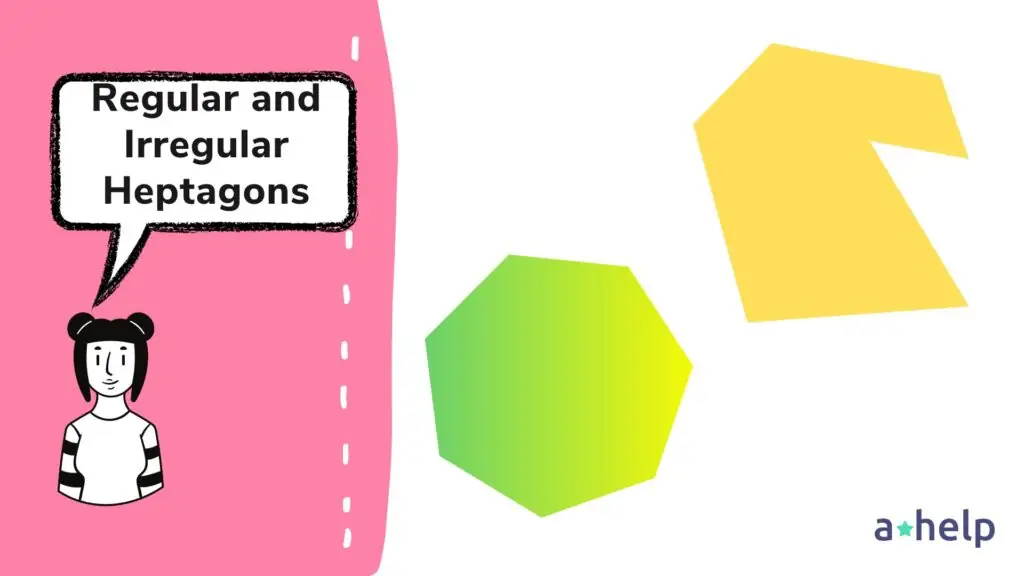
| Feature | Regular Heptagon | Irregular Heptagon |
|---|---|---|
| Sides | All seven sides are of equal length. | The lengths of the seven sides vary. |
| Angles | All seven interior angles are equal, each measuring approximately 128.57°. | The seven interior angles have different measurements. |
| Symmetry | Exhibits rotational and reflective symmetry, making it visually balanced. | Lacks symmetry due to the variability in side lengths and angle measurements. |
| Diagonals | Has 14 diagonals, with each vertex connecting to four other vertices. | Also has 14 diagonals, but the lengths and arrangements of these diagonals vary. |
| Parallel Sides | Does not have any parallel sides due to its symmetry and equal side lengths. | Can have two or more pairs of parallel sides depending on its shape. |
| Exterior Angles | The sum of the exterior angles is 360°, with each exterior angle measuring 51.43°. | The sum of the exterior angles is still 360°, but individual exterior angles differ in size. |
| Examples | A perfectly shaped heptagonal coin where all sides and angles are the same. | An arrow shape with seven sides of different lengths and angles. |
In addition to understanding the distinctions between regular and irregular heptagons, it’s essential to explore the concepts of concave and convex heptagons:
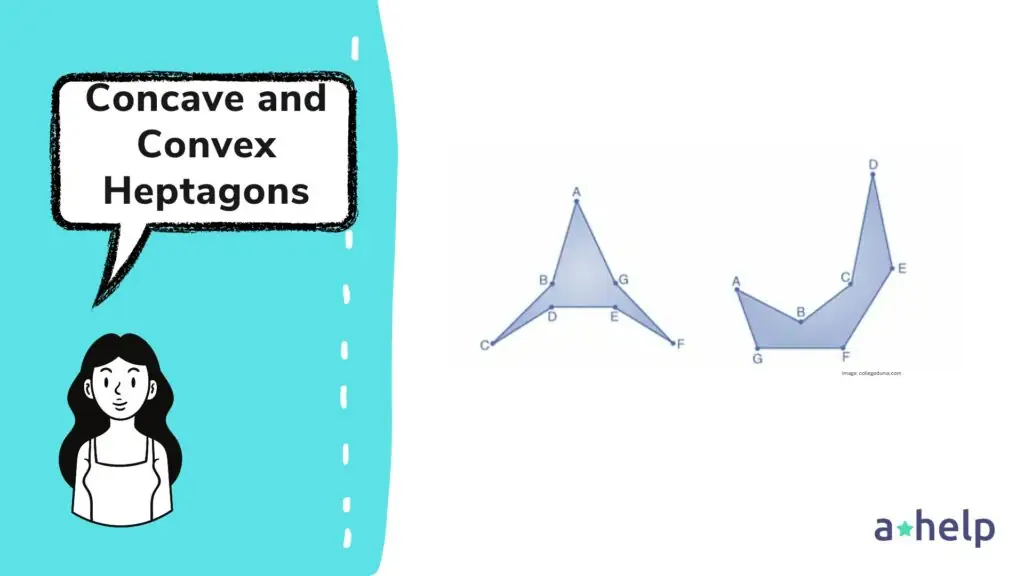
| Feature | Concave Heptagon | Convex Heptagon |
|---|---|---|
| Interior Angles | At least one interior angle is greater than 180°. | All interior angles are less than 180°. |
| Visual Appearance | Appears to have an indentation or “cave-in” due to one or more angles pointing inward. | Bulges outward with no indentations, as all sides push outward. |
| Indentation | Yes, due to the inward direction of one or more angles. | No, as all points of the polygon extend outward. |
| Exterior Lines | If extended, at least one side will intersect with another side of the polygon, indicating a concave shape. | No side, when extended, will intersect with another side of the polygon, indicating a convex shape. |
| Examples | A heptagonal shape that looks like it has a “bite” taken out of it, with one or more vertices pointing inward. | A regular heptagon with equal sides and angles, forming a perfect geometric shape without any inward angles. |
10 Heptagon Examples in Real Life
The heptagon, a seven-sided polygon, is more common in our daily lives than we might initially think. From everyday objects to natural formations, the heptagon shape offers both functional advantages and aesthetic beauty. Here are ten examples of heptagons in real life:
- 📦 Storage Box: Medicine boxes or storage containers often consist of 7 small plastic cases attached to each other, forming a practical heptagon-shaped organizer for daily use.
- 👛 Coin: Heptagonal coins are designed to help people easily differentiate them from other coins, making use of the heptagon’s unique shape for practical identification.
- 🏺 Vase: Some fancy vases showcase a three-dimensional heptagon shape, especially noticeable when viewed from the top, adding an artistic touch to home decor.
- 🌵 Cactus: The stem of certain cacti, when observed from above, forms a natural heptagon, illustrating the geometric shape’s presence in nature.
- 🚤 Paper Boat: Tracing the outer boundary of a paper boat reveals its seven sides, edges, and angles, making it an example of an irregular heptagon in playful crafts.
- 🔺 Arrowhead: Arrowheads, often seen on road signs, feature seven unequal sides and angles, representing an irregular heptagon in symbolic and functional design.
- 👖 Pants: The outline of a pair of pants can resemble a heptagon, with seven sides and angles of varying lengths and degrees, offering a unique perspective on everyday clothing.
- 🕯 Candle Holder: Some candle holders are crafted in the shape of a heptagon, combining functionality with the aesthetic appeal of geometric design.
- 🏡 Green House: Compact greenhouses in backyards are frequently designed with a heptagonal shape, optimizing space while adding a geometric flair to gardening spaces.
- ⭐ Heptagon Star: Used mainly for decoration, heptagon stars are created by joining the diagonals of a heptagon, showcasing the shape’s versatility and decorative potential.
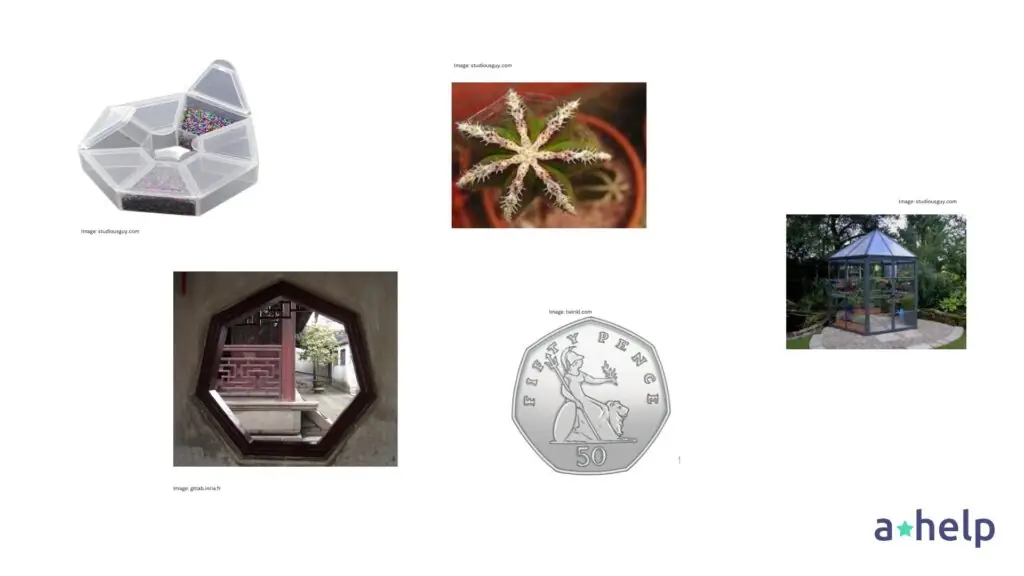
Practice Problems
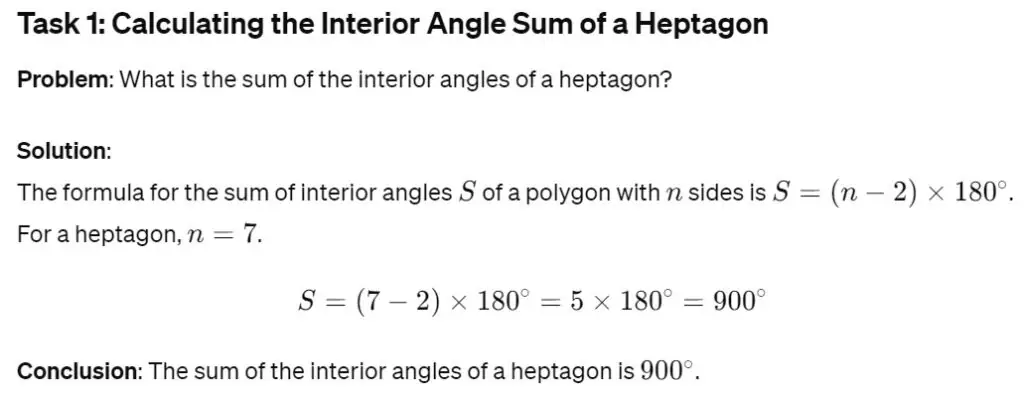
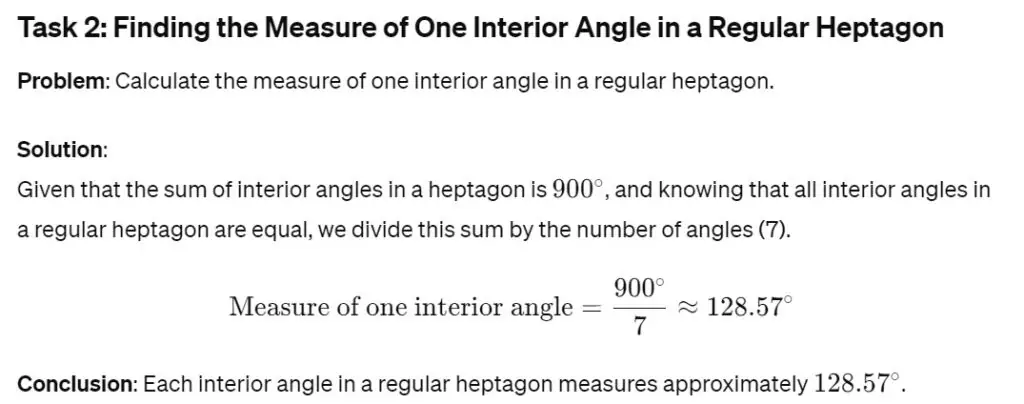

Wrap Up
The heptagon, with its seven sides and angles, is a fascinating figure in the study of geometry. Whether regular or irregular, concave or convex, heptagons offer a glimpse into the complexity and beauty of geometric shapes. Through the exploration of their properties, types, and real-life examples, we gain a deeper appreciation for the heptagon’s place in the geometric universe and its application in our daily lives.
FAQ
Follow us on Reddit for more insights and updates.




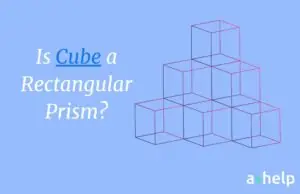
Comments (0)
Welcome to A*Help comments!
We’re all about debate and discussion at A*Help.
We value the diverse opinions of users, so you may find points of view that you don’t agree with. And that’s cool. However, there are certain things we’re not OK with: attempts to manipulate our data in any way, for example, or the posting of discriminative, offensive, hateful, or disparaging material.